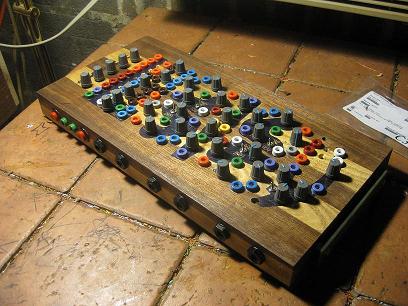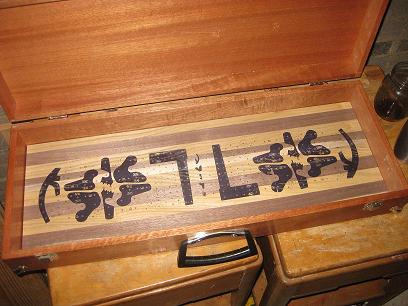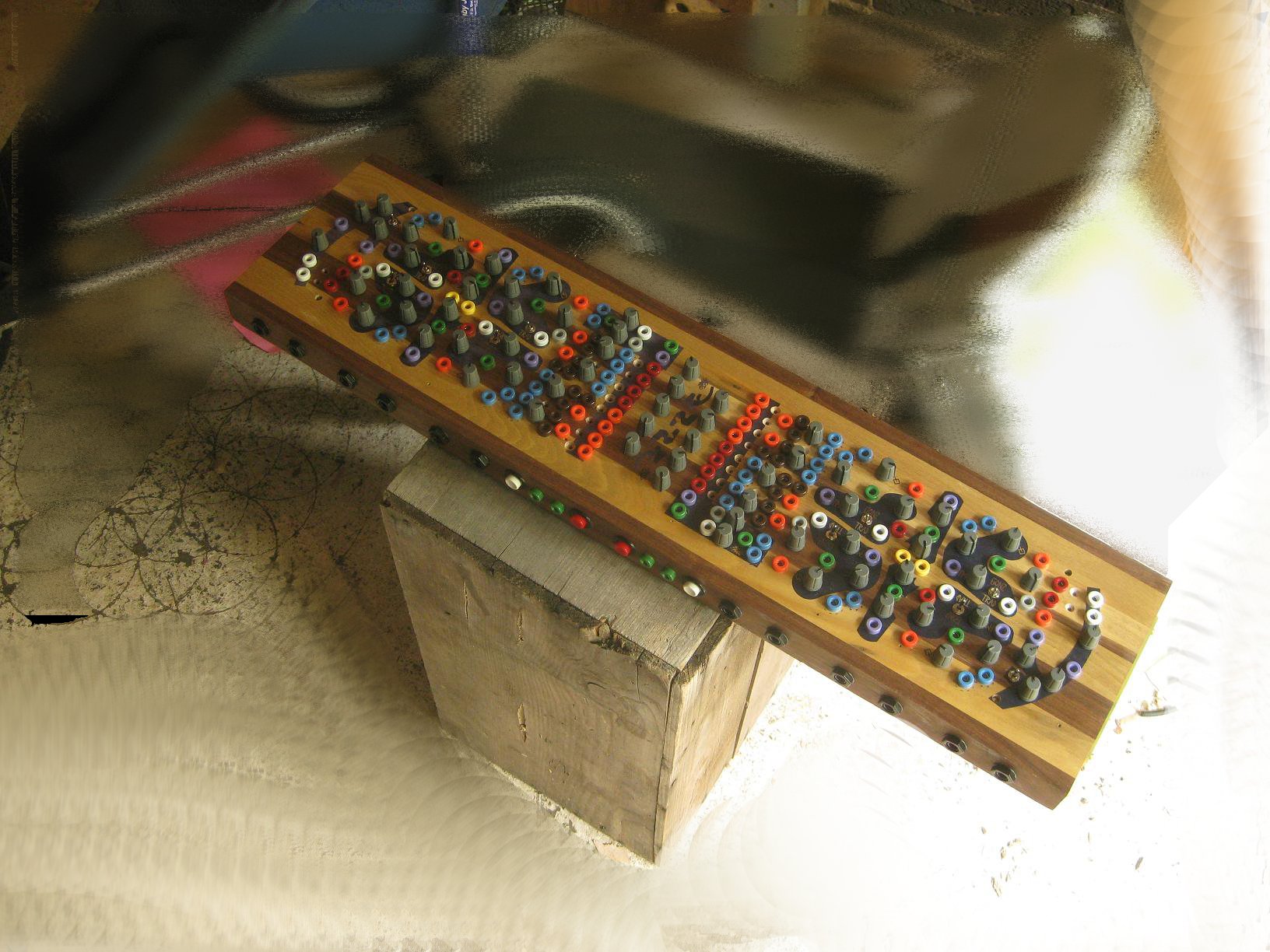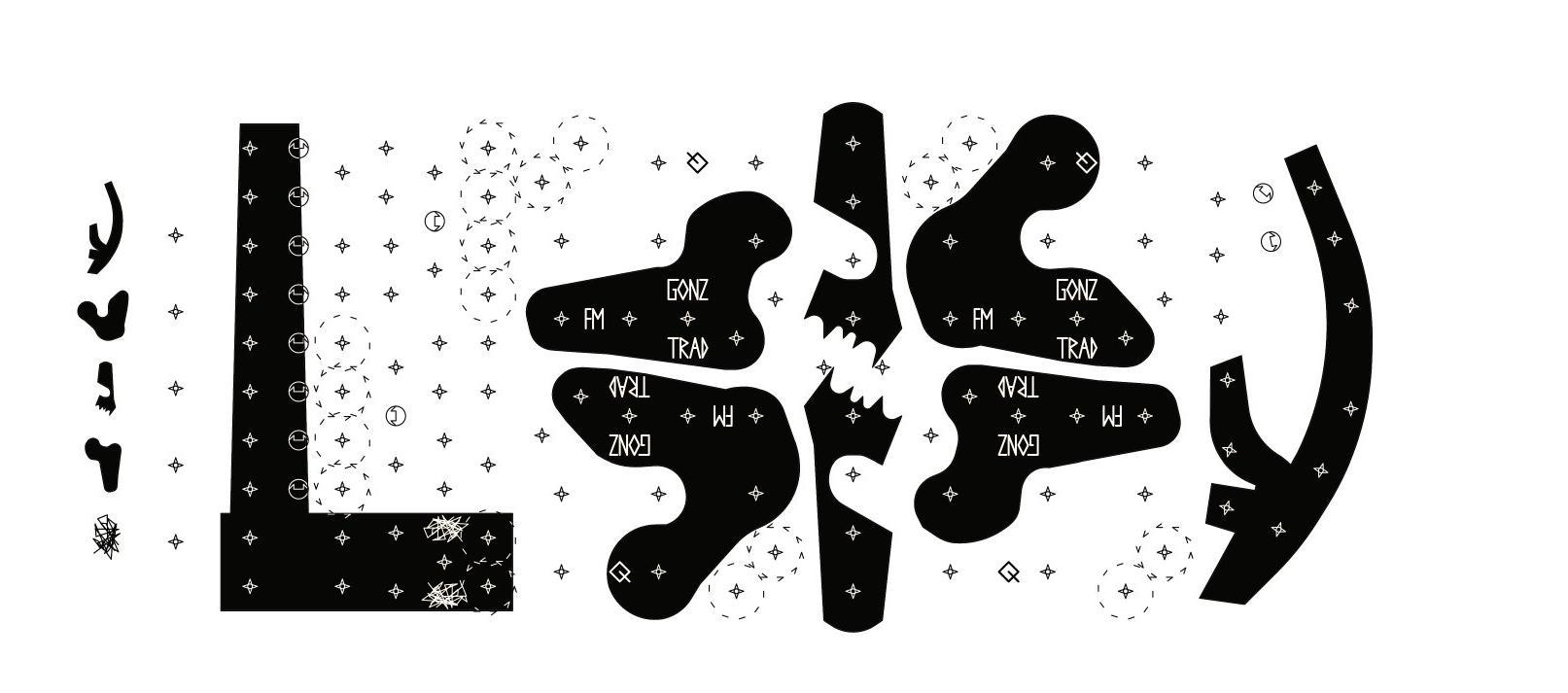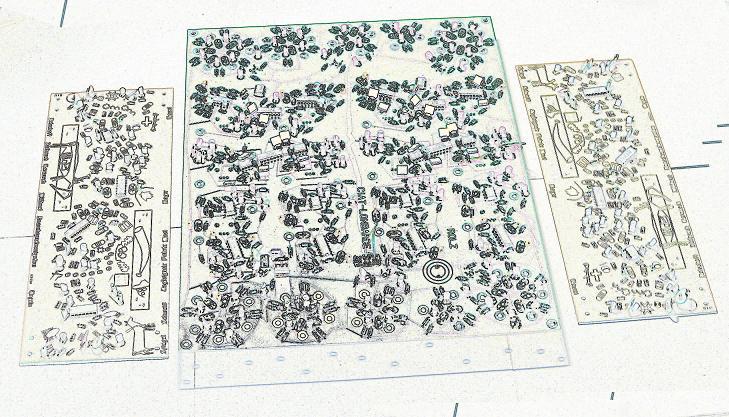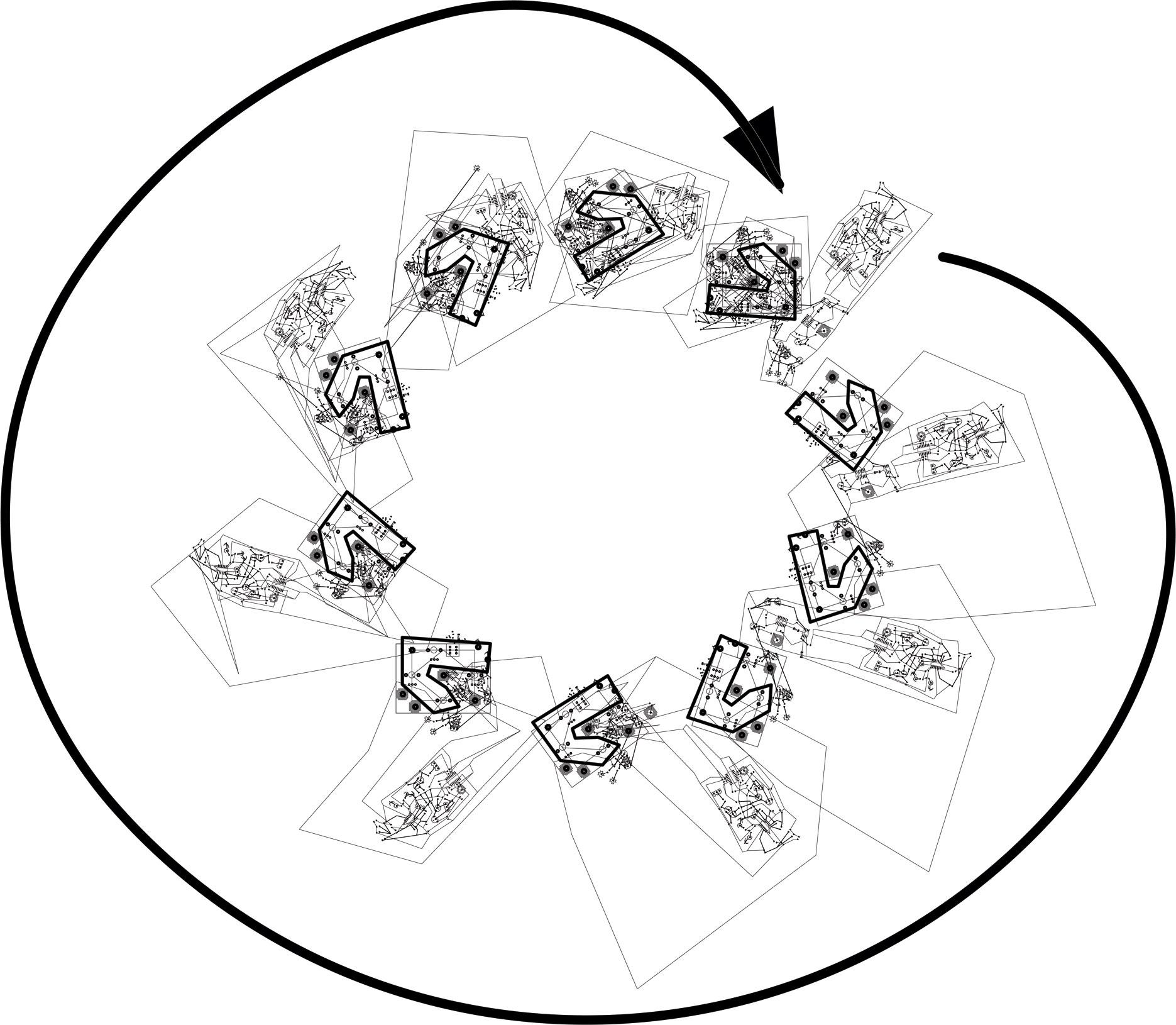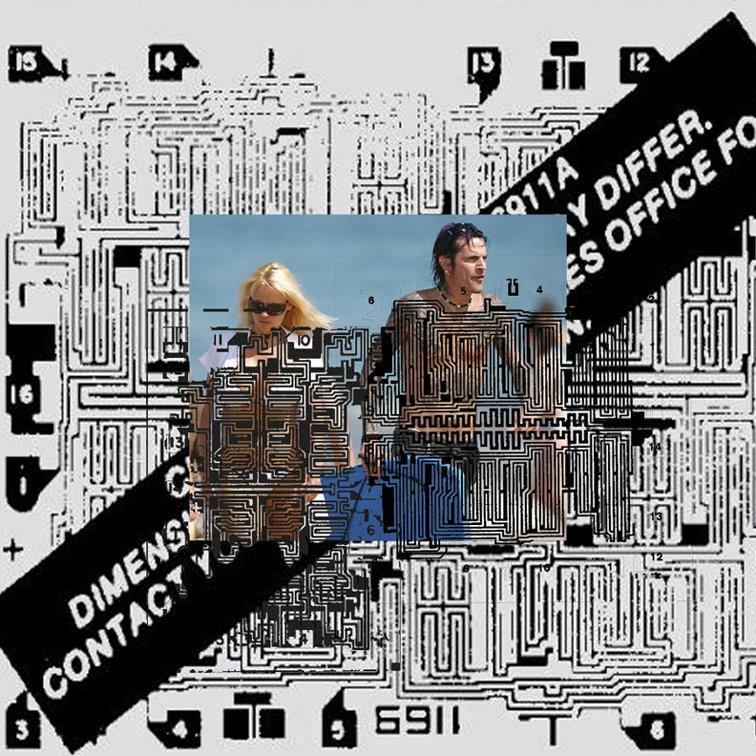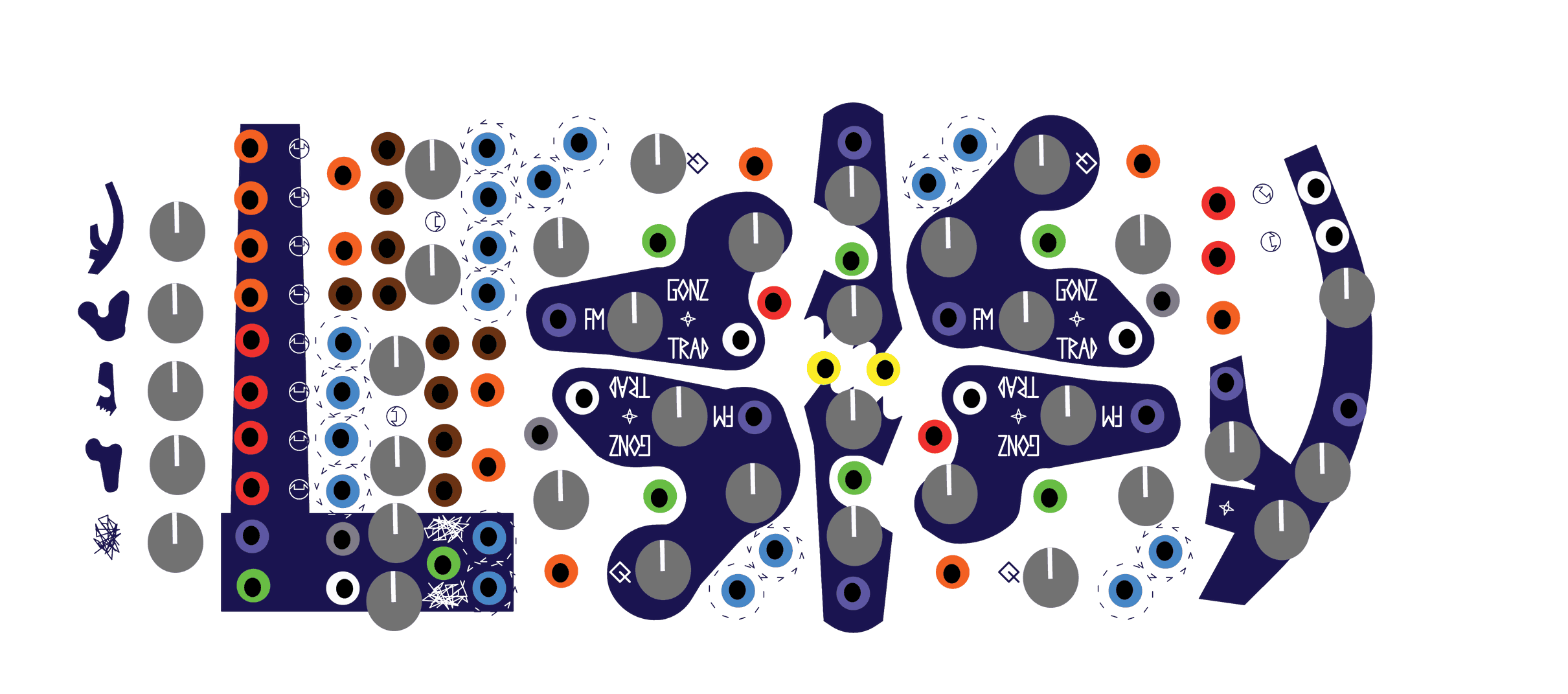
PLUMBUTTER: A DRUM AND DRAMA MACHINE
by Ciat-Lonbarde
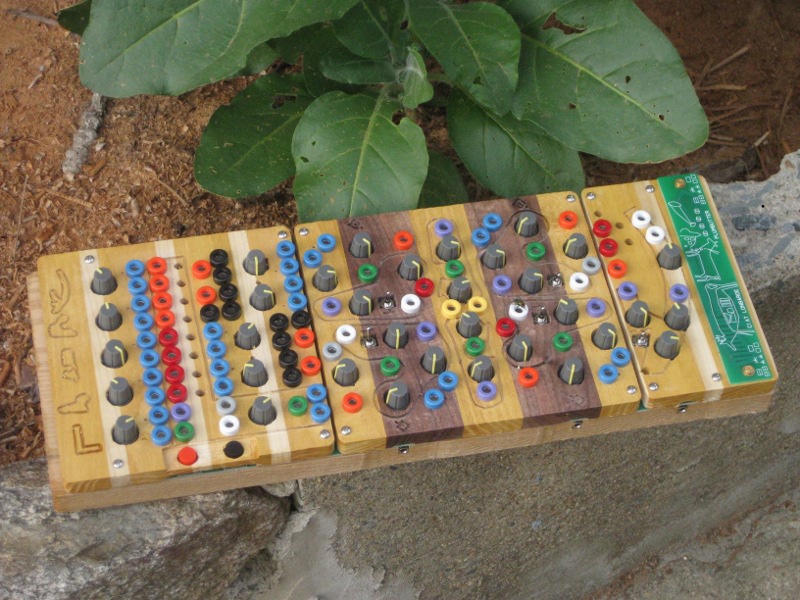
There is a new plumbutter, which we will herein call "plumbutter2". It is very much similar to the old plumbutter, but in a new slim case. The sigils are engraved rather than printed. Still features the signature mulberry, walnut and sassafras woodage. Aux inputs and outputs remain. Besides housekeeping mods to clean the sound, there are two special new mods:
- The stereo mixer section now has CV inputs. They act to in a stereo manner: a signal going up on "verso" makes the right side louder and the left side quieter, and the opposite for "inverso".
- Avdogs are now stereo: each one undulates in the left channel and the right channel, back and forth.
- The snare drum is now much louder
ONE THING YOU SHOULD KNOW IS THAT U NEED A LOT OF BANANA CORDS TO PLAY THIS ONE. PLEASE HAVE THEM READY FOR IT WHEN IT ARRIVES.
Ordering from Ciat Lonbarde
HOW TO PLAY IT (BY MODULE)
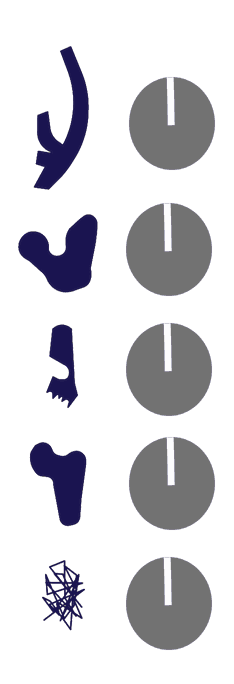 |
First of all, you should know that there is
a master, stereo mixer, which mixes all the drum and drama
content down into a stereo feed, so you don't need an
offboard mixer! Drum and Drama simply means any kind of rhythmic pulsing plus more gestural, soft, or emotional sounds. Thus the instrument is designed for a long performance, cinematic events, to be a major player like the great modular synthesizers of the 20th century which it gets its inspiration from: Arp, Buchla, Serge, and countless nameless inventions that used banana plugs. The main audio producing modules are five (5), as follows:
|
||
| The core, as I said, is rhythmic pulse
machinery based on geometrical concepts of the Rolz-5 drum machine. Basically, there is a 3-roll and a 4 roll. The 3-roll makes a sort of chaotic paradox sound that is highly reactive to outside influence. The 4-roll is a stable, rhythmic oscillator. Brown bananas are androgynous pulse nodes. Orange bananas are strict outputs. Blue bananas are strict control inputs, which are labeled with a V for Verso, and an I for Inverso. V means that a positive-going input causes the oscillator to speed up, and I is vice-versa. Each Roll has a knob to control its rate. The brown jacks, it must be emphasized, are androgynous in that they are both inputs and outputs, which means that a pulse output can be connected here as well as a pulse input. Connecting two brown bananas to each other merges the rhythm of their rolls. The reason there is one orange output per roll, is to provide some information about its state in control voltage format, to modulate other things. Here it should be said that brown bananas deal in negative pulse spikes which are not compatible with control voltage circuitry. Thus, like in the ideas developed by Serge and Buchla, there are really two types of signal: pulse and control, plus audio signals as well. |
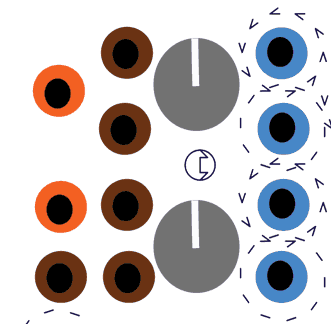 |
||
 |
A green banana "reads" a pulse and inputs it into this module to make it go. Thus the pulse input for "AVDog is right in its middle. In these following modules, there is a sort of "silohette", which demarcates part of the modules' territories. Here, it is a primitive, "dog" shape. Inside this shape are functions that pertain to what is heard at the mixer. Thus, FM modulation and its associated tuning knob, the audio output banana, and at the "dog's" head, is the pitch knob for the reference oscillator inside. The two knobs outside the dog-shape, one is labeled Q and one not. The unlabeled controls the rate of undulation, how fast the AVDog responds to its pulse input; playing AVDog is about tuning its response. Q also tunes the response. The undulator is responsive to a wide band when Q is down, and when it is up, the undulator is very resonant, like a wave-tank. A purple banana is for FM input. It has a tuning knob right next to it. A white banana means the literal audio output. for modulating other things. The red banana, here, means the other side of avdog's undulation, its "negative space", a synthesized audio signal available for modulating other things. The blue jacks are control inputs to control this wave-tank, in tandem with its rate knob. The orange banana is the control output of the undulation. In there, too is a GONZ versus TRAD switch. Start with this on TRAD, and you can turn it off/GONZ later. |
||
The bottom knob sets the base frequency for ultrasound conversion. Yellow jacks are only here in this module. They are the hottest of all, a pure ultrasound square wave that is the reference for the Nyquist resampler. You can see by now that hot colors are outputs, and cool colors are inputs. |
 |
||
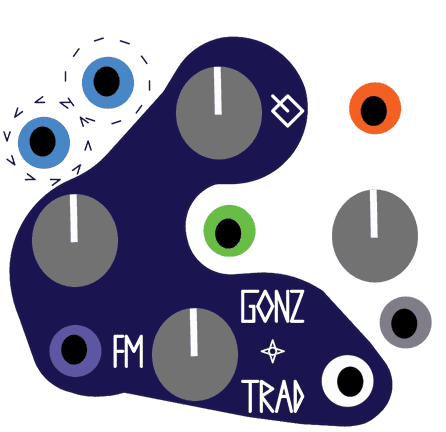 |
In there, too is a GONZ versus TRAD switch. Start with this on TRAD, and you can turn it off/GONZ later. Outside the audio-siloette, besides the green pulse input, is a knob for the "pace" of a gonger, how often he responds to pulse input. This can be viewed as a very slow saw wave form at the orange, control voltage output. There is also a special extra waveform, which is a computed "offbeat", of the same saw-waveshape, as the orange banana. This gray banana is the gong offbeat. |
||
You see, the deerhorn has a built in, two oscillator synthesizer. They used to be hard wired frequency controlled by theta output (orange to purple). Instead, now their are two purple FM inputs, and the possibility to hand wire it. This makes the base tone of deerhorn, a simple two tone straight bellow. That's as your hand moves in towards the antenna and back out again. You must always tune the response first, so that the two leds cross each other at a comfortable range from the antenna. Fine tuning is done with the top knob. In the bottom cluster of controls, it all has to do with the frequency of the synthesizer. The bottom knob sets the base pitch of both oscillators. The next two knobs are associated with the purple bananas- they are FM tuning knobs. The switch on the stub of the deerhorn, is an orienting switch for the direction of the oscillators. In the middle, it turns them off (for auxiliary inputs) It also has two tuning capacitors that should be well enough tuned on arrival. You can always tweak it. They are joined by a fine-tuning knob near the tip of the deerhorn, beneath the two white audio outputs. It is stereo, in that it responds two forward and revers movement as two different channels. |
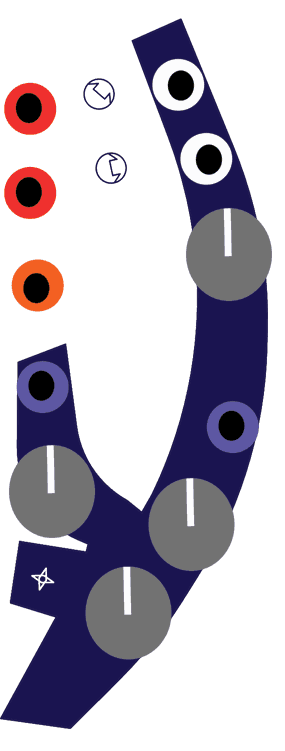 |
||
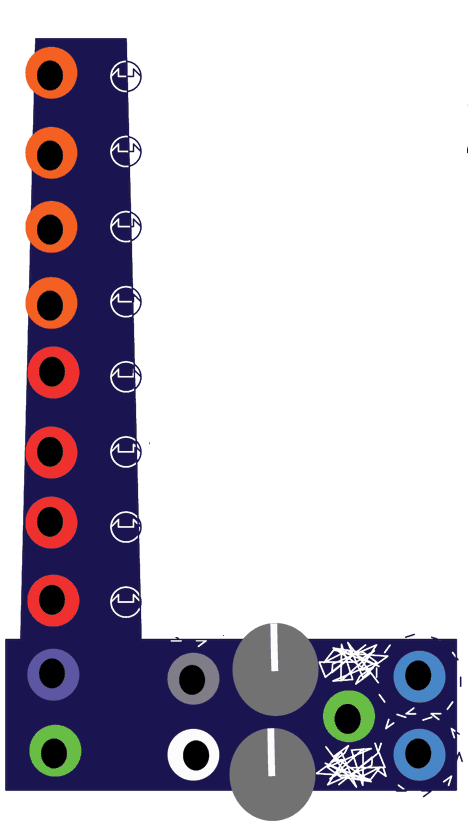 |
Here we go, with the most eclectic module in PLUMBUTTER. That's why I saved it for last. It is an accumulation of ideas about ideal drum machines accumulated in my college days and onwards throughout life. It also reflects the dichotomy of juxtaposition in general, combining two totally different circuits into one form. They do not communicate but you can wire them so. At the base of the factory, represented by noise/steam, is a snare drum and quantum dust source. It does these two things because, at its cores, for it has two, it is listening to the noisy junction of zeners. This goes on to form the material of an adjustable decay snare drum. The decay is voltage controlled by the blue bananas, the green banana triggers a snare hit. The top knob sets the base decay. Pure analog circuitry. It has a wonderful side function, that it comparates the core noise against a reference voltage (bottom knob and blue bananas). The result can be termed quantum dust- it is quantized into pulses, which can be erratic as you set them, for injecting this "gray material" [gray banana] into other pulse places, inputs, rolls, fm inputs. Now for the easy part- an eight stage pulse sequencer. The green banana is its clock. The purple is its data input. To recirculate data, connect one of the four orange bananas back to purple. To input data with your thumb, press the buttons on the front. One is called "andoff" and the other is "oron", meaning clear and set bits respectively. This module is very intuitive and if you just use it you will get it, you can see the bits moving up the smokestack. The red bananas are pulse outputs for the first four beats. And on the front face, between the buttons, are two additional green bananas. These supplement the buttons by allowing you to pulse input andoff/oron data automatically. |
||
| GONZ VERSUS TRAD As I said, start out in TRAD and then move on. This switch strictly affects the audio portion of the onboard synth in each module. For AVDog, TRAD means FM input makes the oscillator vary in frequency, as a triangle wave, and GONZ means FM input makes the oscillator vary in duty cycle, in a gradient between triangle and saw wave. For Gongue, TRAD means FM input makes the resonance vary in frequency, as a damped sine wave, and GONZ means FM input makes the resonator vary in timbre, as its phonemes sweep together and apart. Deerhorn also has a switch which has the same feel of GONZ versus TRAD but without the label. All switches have an off position, which is important for AUXILIARY INPUTS. |
AUXILIARY INPUTS on the 3 major modules, each switch has three positions: up, down, and off (middle). you can put it in the middle to turn the module off conveniently, like a mute button. also, in AVDog and Deerhorn, which take program input, putting this switch off allows the program input to have complete throughput with no onboard synthesizer. Gongue needs to be set at gonz or trad, because its auxiliary input goes straight through the audio filter. |
||
|
|
||
|
|
||
An Essay on Worldmaking in
Plumbutter
|
|||
TIPS N TRICKSOrange Voltages Here is a diagram of the various orange voltages available at modules. These are intended to be low frequency modulators, that mutate the machine in a gestural way.
|
|||
SCHEMATICS PAPERS
